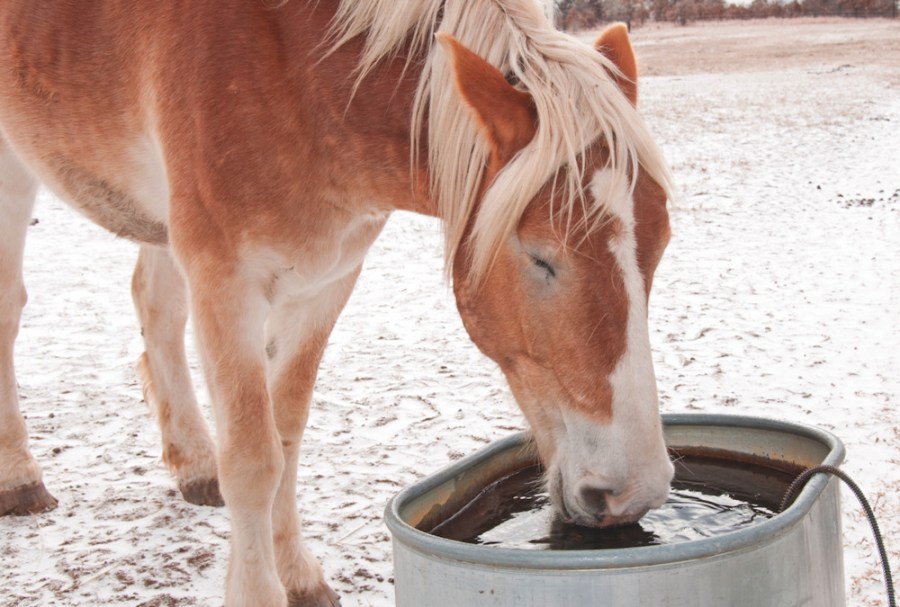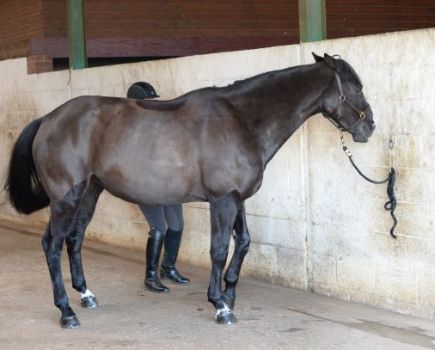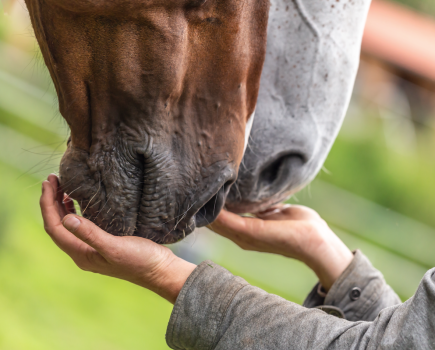It’s easy to dismiss dehydration in horses as being something to worry about only on hot and sunny summer days — but this is not correct? Dehydration is in fact a serious threat in winter too, and it’s essential to do all that you can to avoid it in order to keep your horse in good health.
At this time of year, horses may reduce the amount of water they consume, mainly due to reduced turnout but also because they will generally drink less when the outside temperature is lower. On top of this, many horses prefer not to drink cold water — or they may not be able to if the water in their bucket or field tank is frozen.
Excretion of water occurs in sweat, urine, faeces and breath. On average, a horse will need to consume 25 litres of water per day to replace these losses. Most of this water will come from the food, of which grass contains the most at around 85%.
Hydration is important for optimal body function and a drop in this can compromise the vital functions. Failure to maintain the fluid levels necessary for the specific requirements of the horse can lead to disease or even death.
One of the most common problems of dehydration in horses is impaction colic, which requires veterinary treatment.
Water’s role in survival
Every horse’s body has a water content of approximately 65-70%. The actual amount can vary between individuals, depending on health, nutrition and body condition score, with foals having up to 80%.
Water makes up a large portion of the blood that circulates the body, and is also found within and around cells throughout the horse’s body. It is involved in the majority of processes that are essential for life, including the transportation of nutrients. It’s very simple: no horse — or human for that matter — can survive without water.
In horses, up to 6% of their total water is found in the intestines. It is used to help move food through the gut, most of which is then reabsorbed in the large intestine when digestion ends. This is why a dehydrated horse is vulnerable to colic, because there isn’t enough water in the gut to prevent blockages.
Water in the digestive compartments of a horse’s body has a complex composition which is carefully regulated by the body. The fluid levels can be adjusted by the kidneys, which can increase or decrease the excretion of water depending on the requirements.
These regulatory mechanisms are in place to preserve the composition of the body fluids and to ensure adequate circulation of blood.
How to encourage drinking
Provide constant access to clean, fresh water
Buckets or automatic drinkers should be cleaned regularly to avoid dirt and grime building up. Ensure the horse can always access the water too — this may be harder if the field is boggy or they are worried about bullying from a field mate.
On particularly cold days, check troughs or buckets regularly to ensure that the water hasn’t frozen over.
Make sure they have plenty of food
Most of your horse’s water intake will be absorbed from their food. Less water will be consumed from hay compared to grass, and as hay becomes the main form of forage in winter it means they will need to take in more water through drinking than they would have during other times of the year.
Consider haylage
Haylage contains more water than hay so can be fed instead to aid hydration levels. Remember to change over gradually to reduce the risk of diarrhoea occurring.
Haylage may not be suitable for all equines, so do what is best for your own horse. Contrary to popular belief, haylage is normally lower in sugar than hay, and it contains more protein. However, soaking or steaming hay can help to reduce its sugar levels.
Offer water in buckets
This is better than automatic drinkers, because it means you can measure what they are consuming.
Add a bit of flavour
If you think your horse isn’t drinking enough, flavouring such as apple juice, molasses or mint can be added to encourage the horse to drink it. Some horses may prefer one over the other, so see what is best for your individual.
Warm the water
Warming cold water to a lukewarm temperature has been shown to be preferred by horses. Filling buckets early and leaving them to stand can also take the edge of the chill, compared to water straight out of the hose.
Add salt or electrolytes
This can increase the horse’s thirst and encourage them to drink more.
Add water to feed
A sloppy mash can be quite appealing to horses and is an effective way to increase their water intake and prevent dehydration.
Soak hay
This will increase its water content, but bear in mind it may affect its nutritional value.









